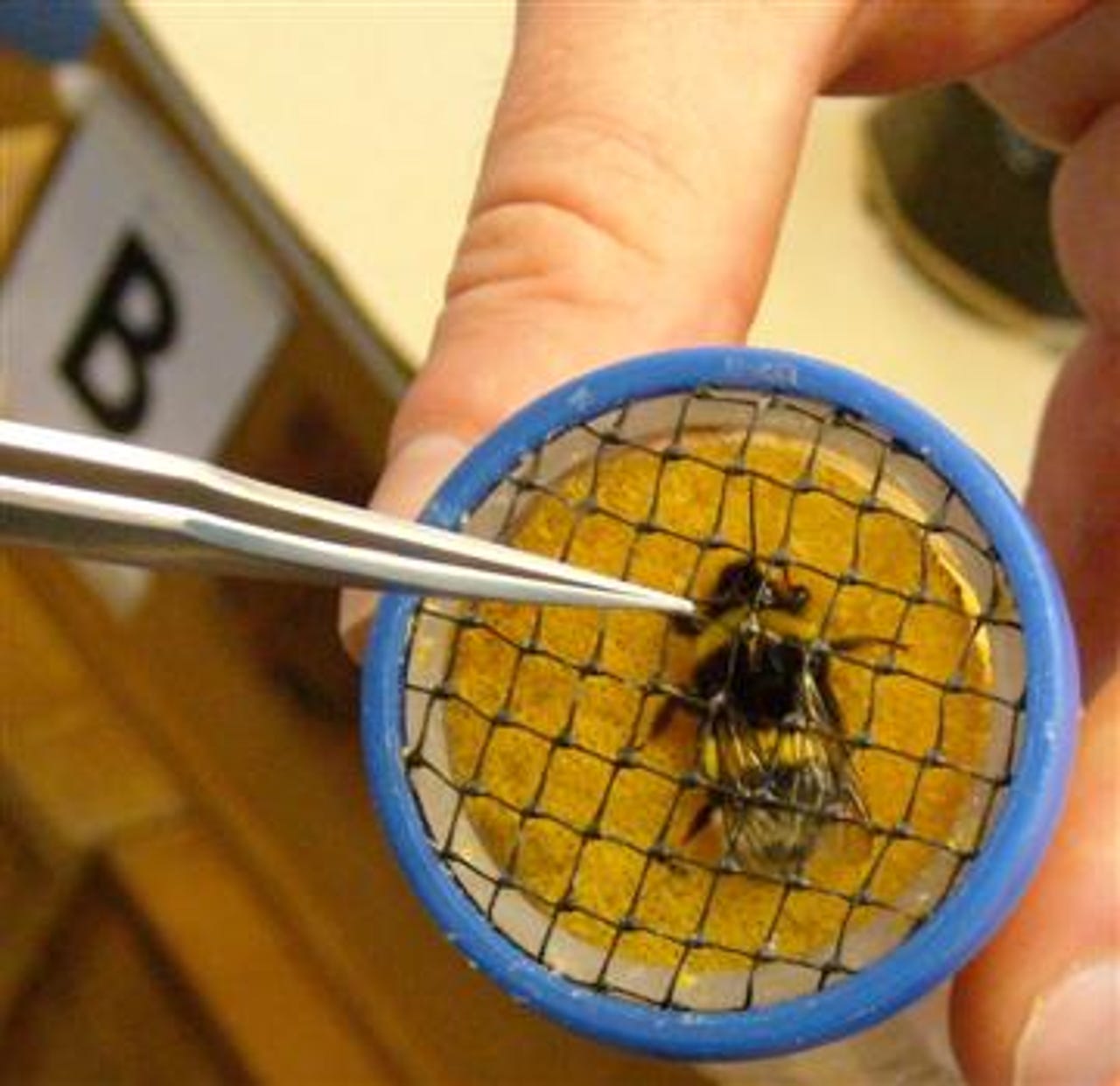Photos: RFID bumblebees create a buzz


Tracking tech bumbles along
Scientists are making a beeline for RFID technology to open up new frontiers of research into insect behaviour. Tiny RFID chips have been attached to hundreds of bees at labs in east London by researchers at Queen Mary, University of London, using the process seen here.
The chips allow researchers to monitor the movements of the entire 200-strong bee colony using RFID readers attached to the hive and artificial flowers.
Photo credit: Queen Mary, University of London
The chips on the back of each bee, seen here, will log their journeys between the hive and the flowers. Scientists hope this data will tell them how the insects harness their tiny brains to make complex decisions when foraging for nectar from flowers in the wild.
Dr Nigel Raine, co-investigator on the project, said: "They have got a relatively small brain but are solving complicated problems. In nature there are lots of different flower types in terms of shape, colour and reward. We are looking at how they optimise flight patterns to get the most reward and how they are able to change routes to incorporate new flowers."
Photo credit: Dr. Josef Timar
Queen Mary is carrying out a number of studies on their colonies of bees, seen here, using RFID monitoring. Researchers are also looking at how artificial pheromones can encourage bees to leave the hive and forage - work that could be invaluable to UK growers of bee-pollinated crops such as strawberries and tomatoes.
It is also being used by university scientists to study bee movements in the Artic Circle, to examine whether daylight controls their foraging behaviour. Dr Raine said: "Without this technology these questions would have been very difficult to address without a huge amount of manpower. The technology is very helpful."
Photo credit: Queen Mary, University of London